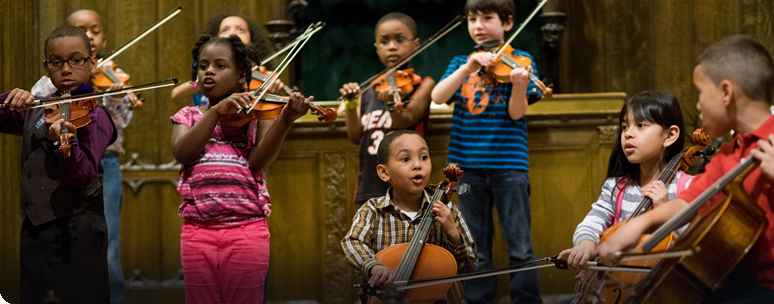Building Communities, Not AudiencesAn essay by CMW founder Sebastian Ruth appears in Building Communities, Not Audiences, the recently published volume of essays edited by Doug Borwick, past President of the Board of the Association of Arts Administration Educators and former Director of the Arts Management and Not-for-Profit Management Programs at Salem College in Winston-Salem, NC. Here is an excerpt of Sebastian's essay, and the book is available for purchase from Amazon. Although in some ways [CMW's] storefronts are merely symbolic of our commitment to impacting the neighborhood, sometimes, as with the young children who stopped to listen to our Haydn quartet, they become an opportunity for direct engagement. On one occasion, a group of teenage boys walked by our rehearsal and made a teasing gesture at us when we were rehearsing, (also shouting a profanity that we assumed to be aimed in our direction). Every day for several months at about the same time, the same group of kids would walk by, and each time we waved and continued to rehearse. Over time that year, we developed a relationship, simply through the glass windows, with these kids as they walked by and gradually their gestures and comments morphed into a friendly exchange. By the end of the year they were waving back and dancing as they walked by. We think of there being many circles of impact we make on our community. At the innermost ring are the hundred or so young people who participate in our programs, coming multiple times per week for lessons, special classes in improvisation, fiddle styles, ensembles, studio classes, and more. At the next ring might be the audiences who hear our concerts in public settings, get to know our musicians, and support the mission of the organization. The passers-by, the kids who see us through the windows of the storefront and may or may not stop to listen, are part of our outer ring of influence. My hope is that even if they’re not deeply involved in our programs and music making, these kids know what it is to see a string quartet rehearsing, and the next time they encounter one, they are less likely to find it something completely foreign, and more likely to say, "Oh yeah, I’ve got one of those on my block." Whether or not a member of the neighborhood participates in our programs, at least they understand that it’s available and that it can be a normal feature of community life. |
